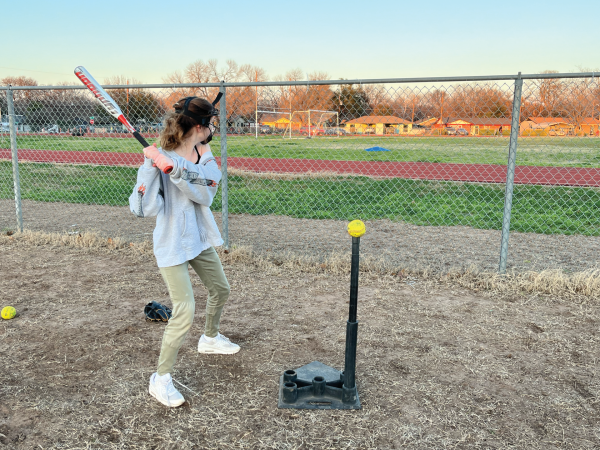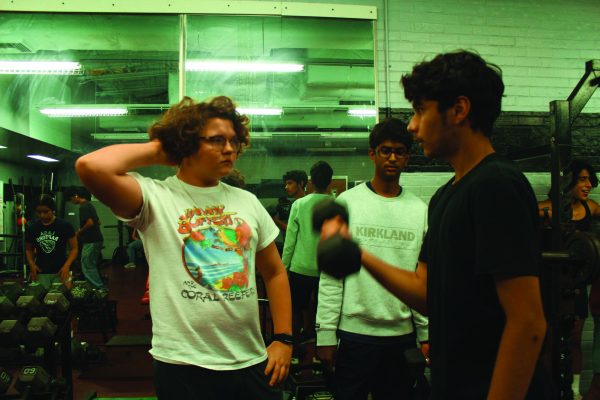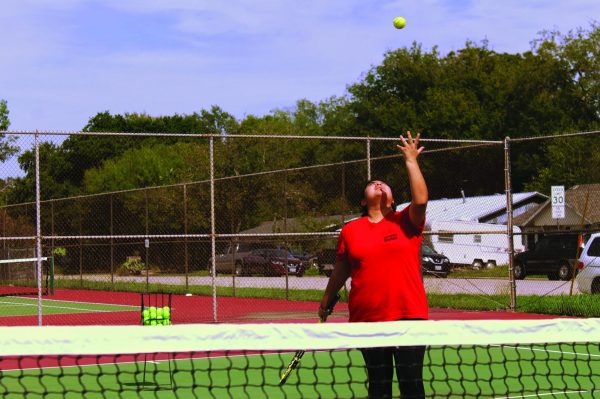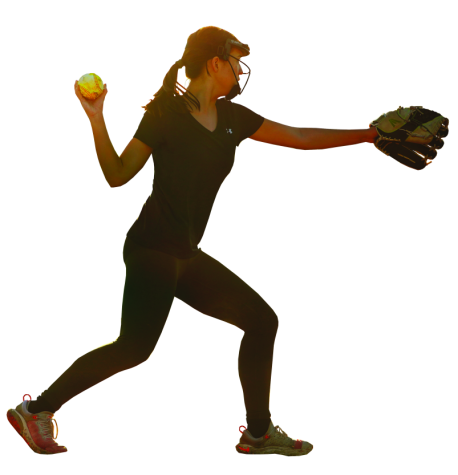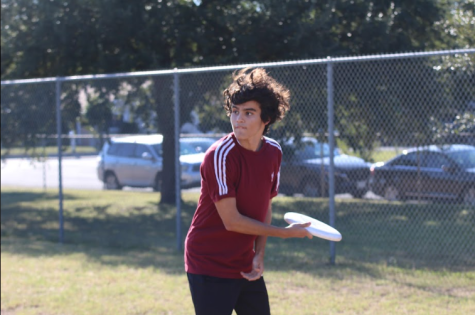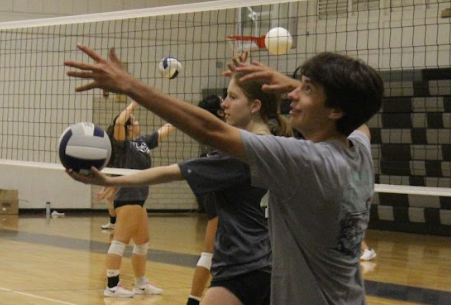Raptor Rundown Issue 4 [May 15 2023]
May 15, 2023
I remember my first experience with tennis. I was watching pre-season matches over the summer, and the sun was unforgiving. Bright, hot rays beamed down on me from overhead, and the dreaded reading of 98 degrees Fahrenheit was another punch in the gut. Players clad in muddied visors and nylon-strung bags shuffled past me, seemingly unphased by the heat. My ears perked up when I heard a loud “pop!” behind me. Upon turning around, what I expected, as well as desperately hoped, to be a soda can with a broken tab was instead a plastic canister of three tennis balls.
Though it had been quite some time since my minimal involvement in tennis, the experience inspired me to attend a practice. Sports editor and LASA varsity tennis team member Annabel Andre stuck by me through it all and guided me through the team’s regimen.
Practice began with serving the ball. Andre instructed me to align my body with where I wanted to aim the ball, throw it up, and hit it over the net – making sure to strike with the center of my racket. After watching her run through the proper form, it didn’t seem too difficult. I attempted to follow her steps; everything seemed to be going to plan. However, when it came time to hit the ball over the net, I quickly realized that I was just blindly swatting the air. Clearly, tennis required a certain degree of hand-eye coordination that I did not possess.
After serving, the court was covered in loose tennis balls. Honestly, perusing the court and piling the balls on the surface of my racket, like a glorified game of Jenga, might’ve been my favorite part.
Once the court was tidied from the fallout of my failed serves, it was time to practice groundstrokes, which were essentially how I would hit a ball hurtling toward me in a tennis match. The first stroke I learned was the forehand, in which the player uses only their dominant hand to strike the ball back to the opponent’s side. In this section, making contact with the ball was much easier, but another problem arose. Though I was hitting it, I had limited to zero control over its trajectory. All I could do was take the credit with unwarranted bravado when the wind carried the ball to a far corner of the court.
Learning the backhand stroke was where my previously dormant tennis potential was awoken. I’d say this was the turning point of my tennis career if you could even call it that. Initially, Andre was reluctant to teach it to me as it’s notorious for being a player’s weakest move. However, I was insistent on learning it. I’d already made friends with failure, and the worst that learning a backhand could do was strengthen that bond.
When the ball came toward me, it felt surprisingly natural to respond with a backhand, with a two-handed grip on the racket, with the back of my right hand following the direction of movement. I made consistent contact with the ball and could feel the gratifying redemption from my lackluster serves. It felt like my success was driven more by me than the breeze. This sudden uptick in tennis competence fed my delusions of making it to a Grand Slam.
At the end of practice, I was left with shortness of breath and excessive lactic acid build-up in my forearms. I was surprised by how much strength it took to hit the ball. For something as small as a tennis ball, I was taken aback by just how much recoil I endured when I hit it (occasionally) over the net.
My experience with tennis made me realize that the sport demanded a lot more cardiovascular endurance than I initially expected. I learned that there was a lot more to tennis than simply making contact with the ball; it also required balance and timing, and a type of agility that could only be achieved through years of continued practice. Nevertheless, I enjoyed my tennis experience and definitely will be playing more tennis in the future.

